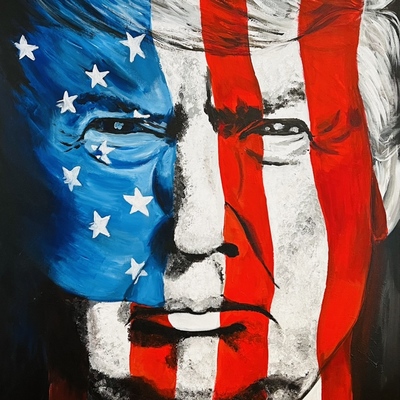Stay informed on the latest Truth Social posts from Donald Trump (@realDonaldTrump) without the doomscrolling. Consider it a public service for your mental health. (Why?)
- The United States has a significant and persistent trade deficit with Thailand.
- The trade relationship between the US and Thailand has been unreciprocal due to Thailand's tariffs, non-tariff policies, and trade barriers.
- Starting August 1, 2025, the United States will charge Thailand a 36% tariff on all Thai products.
- Goods transshipped to evade the 36% tariff will be subject to a higher tariff.
- There will be no tariff if Thailand, or companies within Thailand, decide to build or manufacture product within the United States.
- If Thailand raises its tariffs, that amount will be added to the 36% US tariff.
- The unsustainable trade deficits with Thailand are a major threat to the US Economy and National Security.
The imposition of a 36% tariff on all Thai products entering the U.S. starting August 1, 2025, represents a direct and substantial economic policy action. This will immediately increase costs for U.S. importers and consumers, potentially disrupting supply chains and impacting profit margins for U.S. companies reliant on Thai goods. The policy, aimed at addressing 'unsustainable Trade Deficits,' signals a protectionist stance that could affect various sectors within the S&P 500, particularly those with international supply chains, exposure to consumer goods, or manufacturing operations that could shift to the U.S.
The letter from The White House to the King of Thailand imposes a significant 36% tariff on Thai products and explicitly warns against retaliatory tariffs, framing the trade deficit as a 'major threat to our Economy and, indeed, our National Security.' This assertive and potentially escalatory trade policy could lead to significant diplomatic friction and economic retaliation from Thailand, potentially straining bilateral relations and influencing regional trade dynamics. While not directly referencing military action, the strong language and economic pressure elevate geopolitical tensions.
- Commodities: Gold (XAU) is likely to rise as a safe-haven asset if broader market uncertainty and trade tensions escalate. Oil (WTI) could be indirectly impacted by concerns over global economic growth, but no direct supply shock is indicated. Industrial metals like Copper may fall due to reduced industrial demand if global trade slows. Short-Term Watchlist: XAU/USD price action reflecting risk-off sentiment. Medium-Term Focus: Global growth forecasts and potential for broader trade policy shifts.
- Currencies (Forex): The US Dollar Index (DXY) may strengthen as a safe-haven currency amid increased trade uncertainty, though it could face pressure if the policy is perceived to harm overall US economic growth. The Thai Baht (THB) is highly likely to depreciate against the USD due to the direct negative economic impact on Thai exports. Short-Term Watchlist: USD/THB pair movements and immediate DXY reaction. Medium-Term Focus: Evolution of broader trade policy and central bank responses.
- Global Equities: Major indices like the S&P 500, Nasdaq, STOXX 600, Nikkei 225, and Hang Seng could face downward pressure due to heightened trade uncertainty, increased import costs, and the potential for retaliatory measures or broader trade conflicts. Sectors with significant exposure to international supply chains, such as consumer discretionary, electronics, and manufacturing, would be particularly vulnerable. Thai equities are expected to experience a sharp decline. Short-Term Watchlist: Futures open, VIX spike, and performance of companies with significant Thai trade links. Medium-Term Focus: Earnings revisions for affected companies and shifts in global capital flows.
- Fixed Income (Bonds): US 10Y and 2Y Treasury yields could fall as a flight to safety occurs if market fear increases due to trade tensions. Credit spreads might widen if the economic outlook deteriorates. The assertive language regarding national security could reinforce safe-haven demand. Short-Term Watchlist: UST 10Y yield levels and credit market indicators like the TED spread. Medium-Term Focus: Inflationary pressures from tariffs and the Federal Reserve's monetary policy response to trade-related economic impacts.
- Volatility / Derivatives: The VIX is likely to spike significantly due to the major policy announcement and the increased uncertainty surrounding international trade relations. Options positioning would reflect increased demand for hedging against market downside risks. Short-Term Watchlist: VIX levels and VIX futures term structure. Medium-Term Focus: Potential shifts in volatility regimes if trade tensions become a persistent feature of the economic landscape.
- Crypto / Digital Assets: Bitcoin (BTC) may behave as a risk-on asset initially, correlating with tech stocks if overall market sentiment turns negative. However, it could also potentially be viewed as an alternative macro hedge if traditional markets experience significant stress. Its behavior will largely depend on overall liquidity and investor risk appetite. Short-Term Watchlist: BTC/USD price action relative to equity market movements. Medium-Term Focus: Regulatory news and the broader macro liquidity backdrop.
- Cross-Asset Correlations and Systemic Risk: Increased correlations between assets, particularly a potential breakdown in the inverse correlation between equities and bonds (both selling off), could emerge if trade tensions escalate into a broader systemic risk event. Watch for signs of liquidity stress or margin calls. Short-Term Watchlist: MOVE index for bond volatility and gold/USD co-movement. Medium-Term Focus: Central bank interventions and potential for market plumbing stress in response to trade conflicts.
- Retail Sentiment / Market Psychology: The strong nationalistic rhetoric, emphasizing 'Economy and National Security,' could influence retail investor sentiment, potentially driving interest towards domestic industries or companies perceived to benefit from protectionist policies. It could also lead to increased general market anxiety among retail investors. Short-Term Watchlist: Social media trends and discussions related to trade policy and specific sector movements. Medium-Term Focus: The evolving influence of social media on market structure and potential for coordinated retail pushes in response to trade policies.

